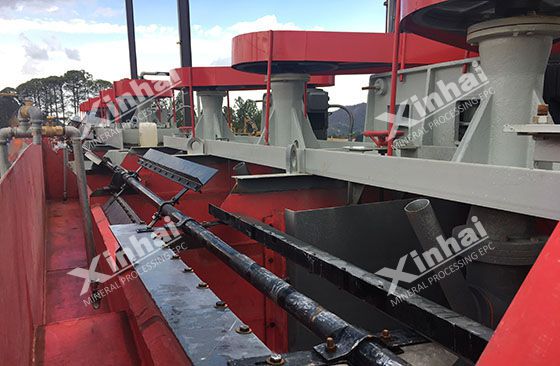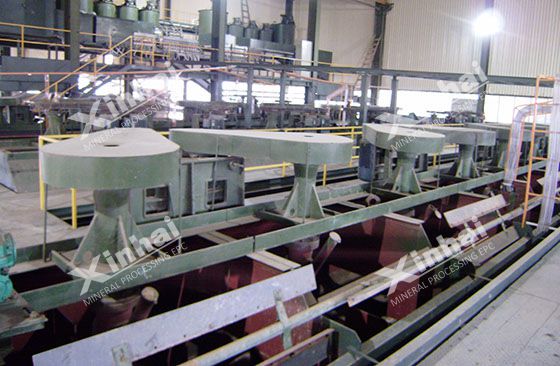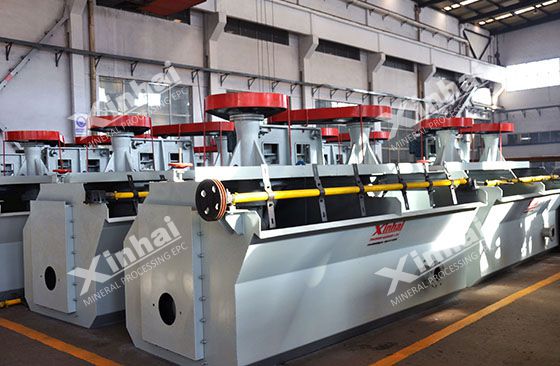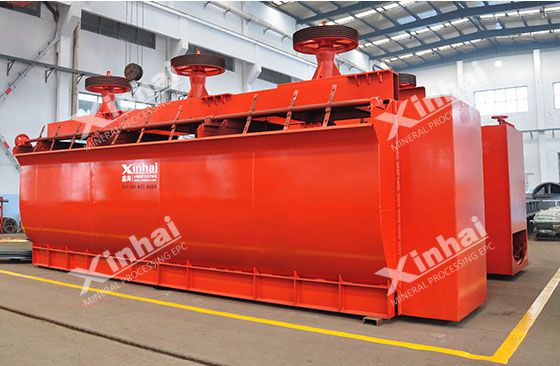
Lead-zinc ore is an important non-ferrous metal resource with a wide range of uses. At present, most of the lead and zinc are obtained through the separation of lead-zinc sulfide ore. However, with the development and utilization of resources, the easy-to-sort lead-zinc sulfide resources are gradually depleted, and the mining of lead-zinc oxide ore has gradually been paid more attention.
Compared with lead-zinc oxide ore, the composition of lead-zinc oxide ore is more complex, with many associated minerals, and the particle size is finer. It is easy to produce sludge and contains a lot of soluble salts. Various reasons make the flotation treatment of lead-zinc oxide ore difficult. This article will introduce you to 5 flotation methods and teach you how to choose lead-zinc oxide ore.

The sulfide-xanthate method is one of the effective ways to recover lead-zinc oxide ore. The principle is to sulfide the lead-zinc oxide ore in advance. The lead-zinc oxide ore surface is covered with a sulfide film with strong hydrophobicity, and then a xanthate collector is used to activate it under the action of copper sulfate to carry out flotation separation. Among them, sodium sulfide is a common vulcanizing agent. It can not only sulfide lead-zinc oxide minerals, but also adjust the pH value, reduce the surface solubility of lead-zinc oxide minerals, precipitate copper, lead, zinc and other metal ions, and disperse sludge.
The temperature has a great influence on the index of this kind of beneficiation method, usually between 50 degrees Celsius and 60 degrees Celsius. Lead-zinc oxide minerals have a better sulfidation effect and better adsorption of chemicals. It should be noted that the amount of vulcanizing agent needs to be strictly controlled. Excessive vulcanizing agent will inhibit the action of mineral surface and xanthate. This method is more suitable for simple high-grade lead-zinc oxide ore.

This method is also one of the main methods for flotation of lead-zinc oxide ore. Its principle is similar to the sulfide-xanthate flotation method. After surface vulcanization of lead-zinc oxide ore, amine collectors are used to flotate lead-zinc oxide.
This method requires attention to the influence of sludge and soluble salts on the flotation process and indicators. When the amount of sludge is large, desliming operations need to be added to the process. This flotation method is more suitable for lead-zinc oxide ore whose ore mud is not serious.
The fatty acid collector flotation method can be used directly in the flotation of zinc oxide minerals, and can also be used in reverse flotation to remove carbonates and sulfates in concentrates to improve the taste of concentrates. The sulfide-xanthate flotation method can be used to flotate lead minerals first, while sodium carbonate and sodium silicate are used to flotate gangue minerals, and fatty acid collectors are used to flotate zinc oxide minerals.
Fatty acid collector flotation method is mainly used for flotation of lead-zinc oxide ore with low iron content and a small amount of carbonate and sulfate gangue minerals.

Chelating agents generally have more than 2 ligands, such as oxygen atoms, nitrogen atoms, sulfur atoms, etc. When these coordinated atoms are coordinated with the same metal ion, other atoms will bend around the central atom into a chelate shape
Therefore, when the chelating agent is coordinated with the metal mineral, a relatively stable coordination relationship will be formed, and it will have a strong selectivity.
Under normal temperature and natural pH conditions, the separation of lead-zinc oxide minerals such as siderite and white lead and gangue minerals such as calcite, dolomite, quartz and limonite can be realized.
The fine particle size and the sludge also contain a part of lead-zinc oxide minerals, which are difficult to recover due to the particle size. Therefore, flocculation flotation is also one of the methods of separation of lead-zinc oxide ore. After the selective flocculant is added, the fine-grained lead-zinc oxide minerals will agglomerate into large-particle minerals, and the floatability is improved, which is beneficial to increase the metal recovery rate.

The above are the five major flotation methods of lead-zinc oxide ore. These methods have their own advantages in use. When selecting the flotation method, beneficiation tests should be carried out first. According to the ore grade, mineral composition, and mineral composition of the lead-zinc oxide ore. The characteristics of particle size composition, combined with the investment cost and other factors, are comprehensively considered, and the appropriate flotation method is selected to obtain the ideal return on investment.
To find out more about our products and solutions, please fill out the form below and one of our experts will get back to you shortly.